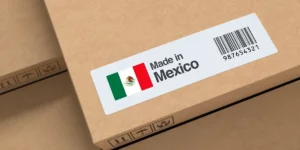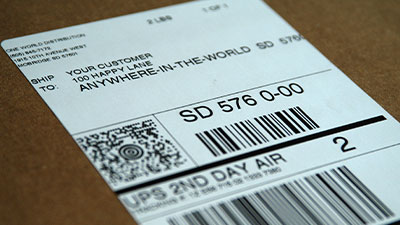Understanding how Mexico tariffs impact your ecommerce operations is crucial to thriving in 2025. Tariffs directly influence the cost of goods sold, which affects pricing strategies, profit margins, and supply chain logistics. Navigating these complexities can define the success or failure of your business in this vibrant market.
Think Mexican tariffs are just another business expense? Think again. These strategic trade tools can transform from profit-killers into competitive advantages, dramatically impacting everything from your pricing power to your ability to outmaneuver local competitors. While some businesses blindly absorb these costs, slashing their margins to stay competitive, others are turning their tariff expertise into market-winning strategies.
What separates the winners from the strugglers in Mexico’s ecommerce gold rush? It’s not just about knowing the rates – it’s about understanding how to leverage Mexico’s complex web of trade agreements, special economic zones, and customs regulations to your advantage. Whether you’re dropshipping from Texas or bulk-importing from Asia, your approach to Mexican tariffs could make the difference between capturing market share and watching from the sidelines.
In this article, you’ll gain insights into:
- The significance of tariffs in international trade
- Strategies for mitigating tariff impacts on order fulfillment
- Navigating customs regulations and compliance
- Logistics challenges specific to cross-border trade
Understanding Mexico Tariffs
Tariffs are taxes imposed on imported goods and play a crucial role in shaping international trade dynamics. They directly affect the cost of goods entering a country, influencing pricing strategies and operational decisions for businesses engaged in cross-border commerce. In the context of ecommerce, understanding these financial impositions is vital for maintaining competitive pricing and optimizing supply chain operations.
The Impact of USMCA on Tariffs
The United States-Mexico-Canada Agreement (USMCA) has reshaped the landscape of tariffs among these North American countries. This agreement replaced NAFTA and aimed to maintain free trade across the region while addressing modern trade challenges.
Under USMCA:
- Many tariffs between the U.S. and Mexico have been eliminated or reduced
- Trade has been streamlined
- Economic collaboration has been fostered
Complexities in Trade Relationships
Understanding U.S.-Mexico tariff agreements is crucial for ecommerce strategic planning. The United States-Mexico-Canada Agreement (USMCA) sets preferential duty rates for goods that meet specific rules of origin requirements.
 However, this landscape is becoming more complex as manufacturers increasingly route Chinese-made components through Mexico for final assembly. For instance, Mexico imposes tariffs on Chinese goods, creating a dynamic where some companies like John Deere circumvent U.S. steel tariffs by moving operations to Mexico.
However, this landscape is becoming more complex as manufacturers increasingly route Chinese-made components through Mexico for final assembly. For instance, Mexico imposes tariffs on Chinese goods, creating a dynamic where some companies like John Deere circumvent U.S. steel tariffs by moving operations to Mexico.
This practice, known as “tariff engineering,” represents a sophisticated approach to duty reduction. Companies can significantly lower their tax burden by transforming products enough to qualify for USMCA benefits. For U.S. ecommerce businesses, this shifting landscape creates ripple effects throughout the supply chain. Mexican suppliers may adjust their prices based on their own import costs, while qualification for preferential USMCA treatment becomes increasingly complex, demanding meticulous documentation of product origins and transformation processes.
Impact of Mexican Tariffs on Ecommerce
These broader trade dynamics directly impact ecommerce pricing strategies and market competitiveness. Mexican tariffs vary significantly across product categories, creating a matrix of considerations for online sellers. Success in this market requires more than just understanding Mexico’s customs tariff rates and codes – it demands a holistic view of how regional trade patterns affect your supply chain costs and compliance requirements.
Key Considerations:
- Product-Specific Tariffs: The Mexico customs tariff rates are highly specific to product categories. For instance, goods like steel and aluminum often face higher tariffs due to existing trade agreements and disputes. Understanding these specific rates is essential for accurate pricing.
- U.S. Tariffs on Mexico: The trade dynamics between the U.S. and Mexico further complicate pricing strategies. Fluctuations in these tariffs can directly impact your cost structure, requiring real-time adjustments to maintain margins.
- China-Mexico Tariffs: Products imported from China that pass through Mexico may also be subject to additional tariffs. This adds another layer of complexity when sourcing materials or products internationally.
Getting these tariffs right starts with knowing your product’s customs codes and tax rates inside and out. Think of it as building a strong foundation – when you understand exactly what you’ll pay in duties, you can build smarter pricing strategies and create a supply chain that makes sense for your business. This preparation isn’t just about saving money today – it helps protect you from nasty surprises when tariff rates change, keeping your business running smoothly even when market conditions shift.
Trump's Proposed Tariffs on Mexico and Their Impact
Proposed tariff policies by former President Trump have loomed over U.S.-Mexico trade relations. Trump advocated for tariffs as leverage to influence Mexico’s immigration policies and manufacturing practices. These proposals included:
- Universal Tariffs on Mexican Imports: President Trump stated that his administration might implement 25% tariffs on Canada and Mexico starting February 1, 2025, unless they take more effective action to curb the flow of unauthorized migrants and illegal drugs entering the United States.
- Sector-Specific Tariffs: Additional duties targeting specific industries like automotive and agriculture, designed to encourage onshore manufacturing and reduce U.S. reliance on Mexican supply chains.
If reintroduced, such tariffs could disrupt the flow of goods, raising costs for U.S.-based ecommerce businesses that rely on Mexican suppliers for production or assembly. Increased tariffs on Mexican imports would directly inflate retail prices, strain supply chains, and potentially make U.S. businesses less competitive in global markets.
Ecommerce-Specific Impacts
For ecommerce businesses, the effects could be particularly pronounced:
- Higher Fulfillment Costs: Tariffs on Mexican goods would increase the cost of sourcing inventory, affecting product pricing and profit margins.
- Disrupted Supply Chains: Businesses relying on just-in-time inventory models may face delays or increased costs due to tariff-related supply chain bottlenecks.
- Increased Shipping Costs: Many ecommerce businesses ship directly from Mexico to U.S. customers, and additional tariffs could add complexity and expense to cross-border logistics.
These potential changes highlight the importance of building flexible supply chains and exploring alternative sourcing strategies.
How Mexico Tariffs Differ for D2C vs. Wholesale Shipments
For businesses operating in the U.S., the type of shipment – direct-to-consumer (D2C) or wholesale – significantly affects how tariffs and duties are applied:
Wholesale Shipments
For bulk shipments to a U.S. location, import fees are calculated based on the wholesale cost of goods. This approach benefits businesses importing large volumes for domestic distribution.
D2C Shipments
Shipments sent directly to customers in the U.S. are subject to duties and taxes calculated on the retail value of the goods, which is typically higher than wholesale value.
This distinction is critical for ecommerce businesses to understand, as it directly influences pricing strategies, fulfillment methods, and overall costs. Proper tariff planning ensures compliance and avoids unexpected fees that could erode profit margins.
Navigating Customs Regulations and Compliance
Understanding customs regulations is crucial for ecommerce businesses operating across borders. The Harmonized System (HS) provides a standardized method internationally for classifying traded products, which is essential for determining tariff rates.
In Mexico, the Harmonized Tariff Code is pivotal for identifying goods and their corresponding tariffs. This system, known as the Mexico Harmonized Tariff Schedule, categorizes products using a six-digit code. Each code represents a specific product type and helps in defining applicable duties.
How to effectively Navigate Mexican Tariffs:
- Classify Goods Accurately: Proper classification under the HS code ensures compliance with customs requirements, prevents delays, and avoids penalties.
- Ensure Accurate Documentation: Include correct tariff codes and supporting documents to facilitate smooth customs clearance.
- Tariff Rates: The tariff rates are directly influenced by the classification under the harmonized system, impacting the cost-efficiency of importing goods.
- Leverage Trade Agreements: Maximize benefits under agreements like USMCA by meeting rules of origin requirements to qualify for preferential duty rates.
- Optimize Supply Chains: Evaluate sourcing and manufacturing locations to minimize tariff exposure and explore strategies such as tariff engineering to reduce costs.
Using these codes effectively ensures compliance and optimizes your pricing strategies by accurately predicting costs associated with importing into Mexico. This strategic approach empowers businesses to maintain competitiveness in a dynamic market environment.
The Real Challenges of Cross-Border Trade with Mexico
Navigating the logistics landscape of cross-border trade with Mexico presents unique challenges for ecommerce businesses. Logistics challenges can significantly impact operational efficiency and customer satisfaction, making it crucial to identify and address these hurdles effectively.
1. Customs Delays
Customs clearance isn’t just slow – it’s unpredictable. While a shipment might sail through one week, the next could face weeks of delays over a single missing document or misclassified tariff code. Smart businesses are combating this by maintaining detailed digital documentation systems and building extra lead time into their supply chains.
2. Infrastructure Limitations
Mexico’s infrastructure creates unique shipping patterns that might surprise U.S. sellers. While major highways like the ones connecting Mexico City to Monterrey are world-class, last-mile delivery in many regions relies on a patchwork of local carriers and creative routing solutions. Top performers in the market often maintain multiple distribution points rather than relying on a single warehouse location for more sustainable fulfillment.
3. Complex Regulations
Regulations in Mexico don’t just differ from U.S. rules – they’re constantly evolving. Recent changes to electronic invoice requirements (CFDI 4.0) caught many sellers off guard, requiring complete overhauls of their documentation processes. Staying current with these changes isn’t optional – it’s a core business requirement.
4. Supply Chain Disruptions
Supply chain stability requires thinking beyond just logistics. Political shifts, from local elections to international trade disputes, can suddenly change border crossing times or documentation requirements. Successful businesses maintain backup suppliers and alternative shipping routes for critical inventory.
5. Communication Barriers
Effective communication isn’t just about speaking Spanish – it’s about understanding business culture. Whether you’re negotiating with customs brokers or coordinating with warehouse staff, recognizing the importance of personal relationships and proper business etiquette can mean the difference between getting priority treatment or facing constant delays.
Addressing these challenges involves strategic planning and collaboration with experienced logistics providers who understand the intricacies of Mexican trade laws. Employing a robust logistics strategy ensures seamless cross-border operations, allowing you to focus on delivering exceptional value to your customers.
Understanding the Value Added Tax (VAT) framework in Mexico is crucial for ecommerce businesses aiming to optimize their pricing strategies. With a standard VAT rate of 16%, the Mexican tax landscape significantly influences product pricing and overall profitability.
Key considerations include:
- Pricing Strategy Adjustments: Incorporating VAT into product pricing ensures compliance while maintaining competitive advantage. Businesses must decide whether to absorb VAT costs or pass them onto consumers.
- Impact on Supply Chain: VAT contributes to the total landed cost, impacting supply chain decisions. Partnering with logistics experts who understand these intricacies can streamline operations.
- Compliance and Record-Keeping: Accurate documentation and reporting are vital for compliance. Failure to adhere to VAT regulations can result in penalties, disrupting business operations.
Ecommerce firms should leverage technology solutions for efficient VAT management. Automation tools assist in accurate tax calculations and reporting, reducing administrative burden. Collaborating with an experienced 3PL further enhances compliance, operational efficiency, and expenses.
Market Growth Opportunities in Mexico
The growth of Mexico’s ecommerce market presents lucrative opportunities for businesses aiming to expand their reach. With projections indicating the market will soar to $82.1 billion USD by 2028, this trajectory underscores significant potential for ecommerce enterprises.
$82.1 Billion
Mexico's ecommerce market is expected to reach by 2028.
Key Drivers of Growth
Understanding the factors driving this growth can help businesses tailor their strategies effectively:
- Increased Internet Penetration: As more Mexicans access the Internet, digital literacy rises, leading to greater online shopping activity.
- Mobile Commerce Expansion: The proliferation of smartphones has transformed shopping habits, with a growing number of consumers making purchases via mobile devices.
- Improved Payment Systems: Innovations in secure payment gateways have enhanced consumer confidence in online transactions, reducing barriers to entry for new ecommerce ventures.
- Logistics and Fulfillment Advancements: Enhanced infrastructure and logistics solutions facilitate efficient order fulfillment, essential for catering to the burgeoning demand.
Strategic Positioning
Understanding these dynamics allows businesses to position themselves strategically within the Mexican market. Leveraging these opportunities promises revenue growth and strengthens brand presence in a rapidly evolving digital landscape.
As you navigate this exhilarating market expansion, focus on innovation and customer-centric strategies to capture and retain a loyal customer base.
Your Next Move in Mexico's Ecommerce Revolution
The difference between struggling in Mexico’s booming ecommerce market and dominating it often comes down to one factor: how strategically you handle tariffs. While some businesses lose precious margins to unnecessary duties and compliance costs, market leaders are turning their tariff expertise into a powerful competitive edge. In a market projected to reach over $80 billion, even small improvements in duty management can translate into significant bottom-line gains.
But here’s the reality: The tariff landscape is shifting rapidly. New trade agreements, changing regulations, and evolving supply chain patterns mean that yesterday’s strategies may not work tomorrow. The businesses that will thrive in 2025 and beyond aren’t just reacting to these changes – they’re getting ahead of them.




